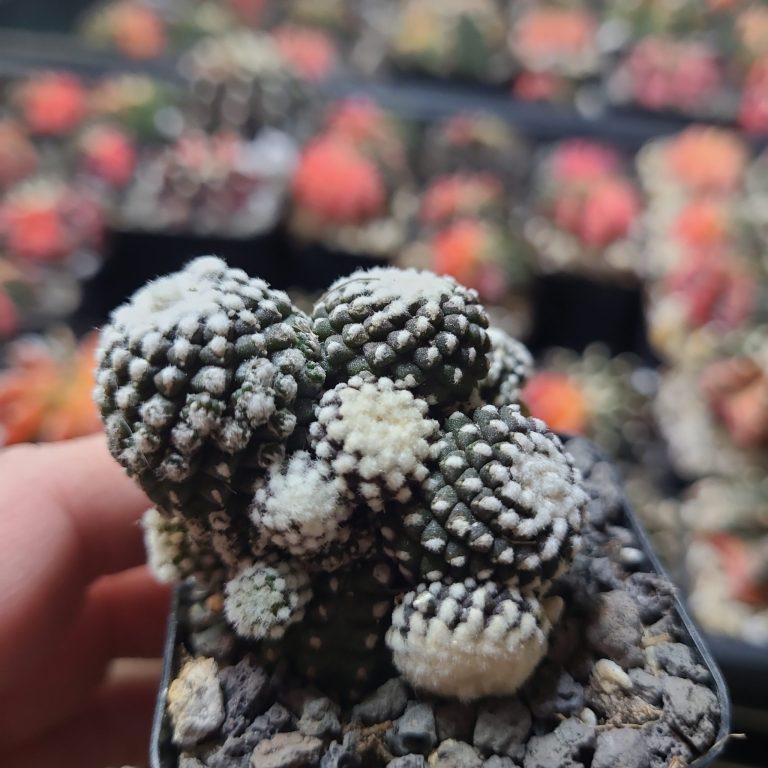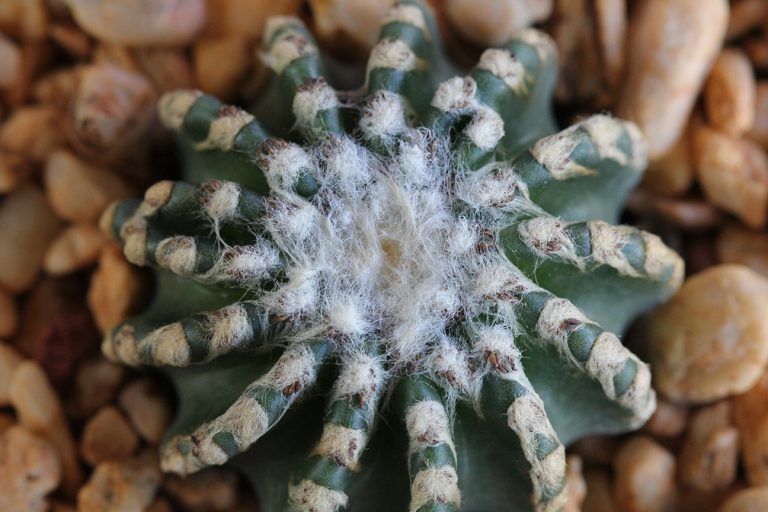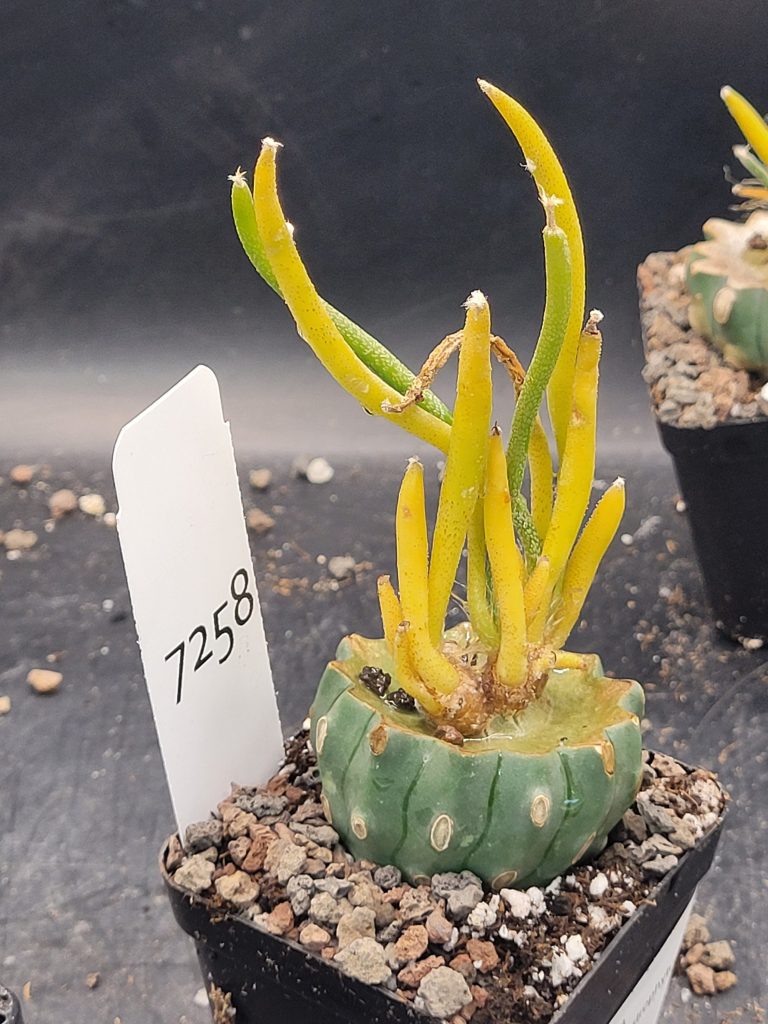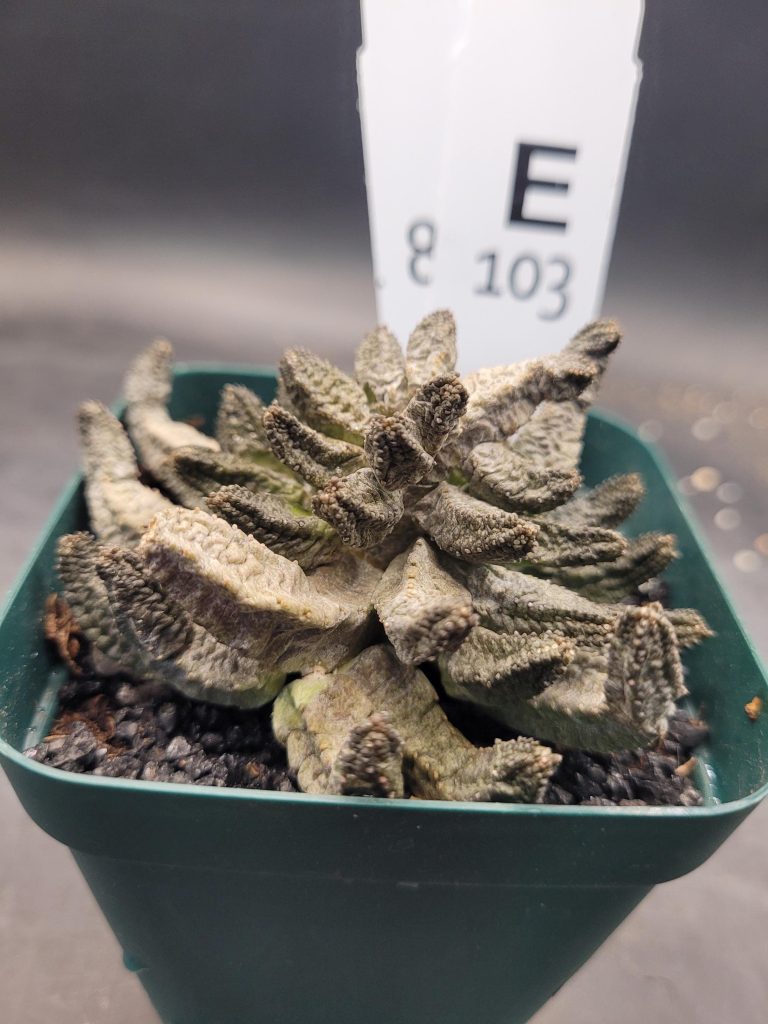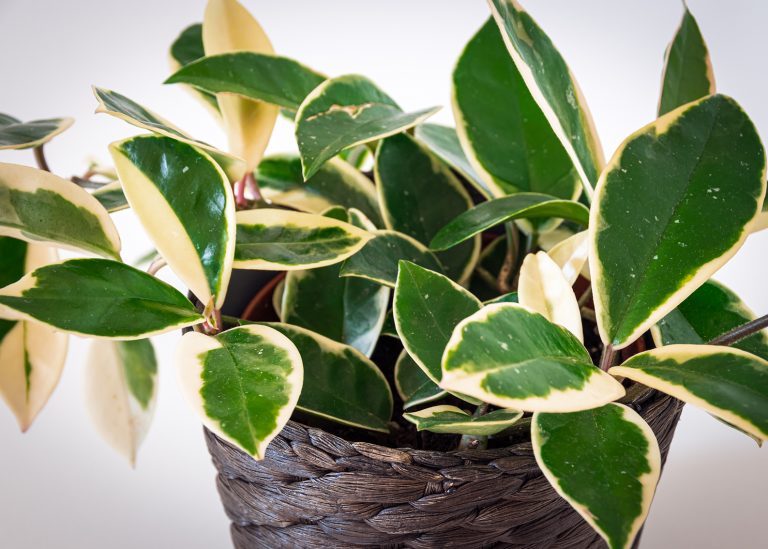The “Desert Elephant’s Foot” – Powerful. Sculptural. Resilient.
Adenium arabicum is a slow-growing, thick-trunked succulent native to the Arabian Peninsula. Loved for its dramatic caudex, compact form, and sometimes pink-to-red blooms, this species differs from Adenium obesum in both shape and growth style. With the right care, it becomes a living sculpture, perfect for bonsai lovers and cactus collectors alike.
🌞 Light Requirements
Full sun is a must.
- Outdoors: Place in direct sunlight for 6–8 hours a day.
- Indoors: Use a south-facing window or a high-quality grow light to mimic full sun.
- Plants grown in low light become leggy and may not flower.
🛈 Tip: Outdoors in summer, rotate the pot occasionally to keep the growth balanced.
💧 Watering
As a desert-adapted plant, Adenium arabicum thrives on drought cycles.
- During growing season (spring–fall): Water deeply only when soil is completely dry—typically every 7–14 days.
- During dormancy (late fall–winter): Water sparingly or not at all. Once every 3–5 weeks is sufficient, depending on temperature and light.
🚫 Overwatering is the #1 killer. Let the caudex wrinkle slightly before watering again. Never let the pot sit in water.
🪴 Soil & Potting
Adenium arabicum needs excellent drainage to avoid root and caudex rot.
- Use a gritty cactus/succulent mix, or make your own using:
- 50% cactus mix
- 25% coarse perlite or pumice
- 25% coarse sand or crushed lava rock
- Pot in a shallow, wide container with multiple drainage holes. Shallow pots help encourage caudex spread.
🌟 Pro tip: Keep the caudex slightly raised above the soil line for a more sculptural look and to prevent rot.
🔁 Repotting
Repot every 2–3 years to refresh the soil and shape the roots.
- Best time: Early spring before new growth begins.
- When repotting, trim long roots and shape the caudex as needed.
- Wait 3–5 days before watering after repotting to allow roots to callus and avoid rot.
🌡️ Temperature & Humidity
- Ideal temps: 70–95°F (21–35°C) during growth
- Protect from cold: Do not expose to temps below 50°F (10°C)
- Loves dry to moderate humidity—avoid overly humid spaces indoors.
🧼 If grown indoors, ensure airflow to prevent fungal issues.
🌸 Flowering
While not as prolific a bloomer as A. obesum, Adenium arabicum can produce trumpet-shaped flowers in shades of pink, red, or white.
To encourage blooming:
- Provide maximum sun
- Keep it warm and dry
- Use a low-nitrogen fertilizer (see below)
🌱 Fertilizing
Feed lightly during the growing season only.
- Use a balanced or low-nitrogen fertilizer (e.g., 5-10-10 or cactus-specific)
- Apply once a month, diluted to half strength
- Stop feeding during winter dormancy
✂️ Pruning & Shaping
- Prune in early spring to encourage branching and shape the plant.
- Can be trained as bonsai or allowed to grow into a short tree.
- Don’t be afraid to cut back leggy branches—new growth is compact and more visually appealing.
🐛 Common Problems
- Root Rot: Almost always caused by overwatering or poor soil.
- Pests: Occasionally affected by spider mites, aphids, and mealybugs. Treat with neem oil or insecticidal soap.
- Leggy Growth: Usually due to low light. Move to a brighter spot.
🌿 Final Thoughts
Adenium arabicum is a slow but rewarding grower, loved for its thick caudex, bold silhouette, and drought-tolerant nature. With patience, it will transform into a living sculpture that looks like it belongs in a desert temple.
Just remember:
✅ Sunlight is power
✅ Water sparingly
✅ Drainage is non-negotiable

